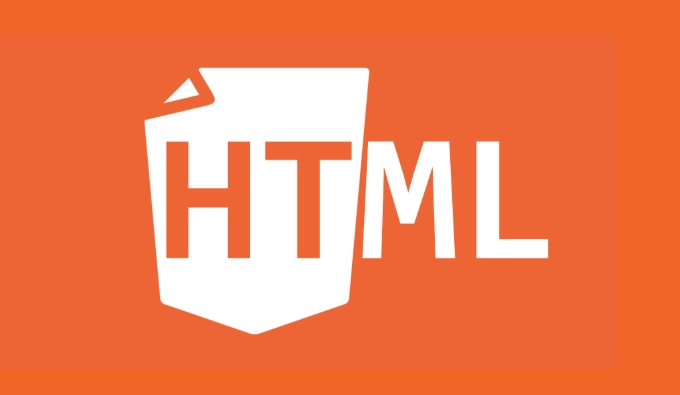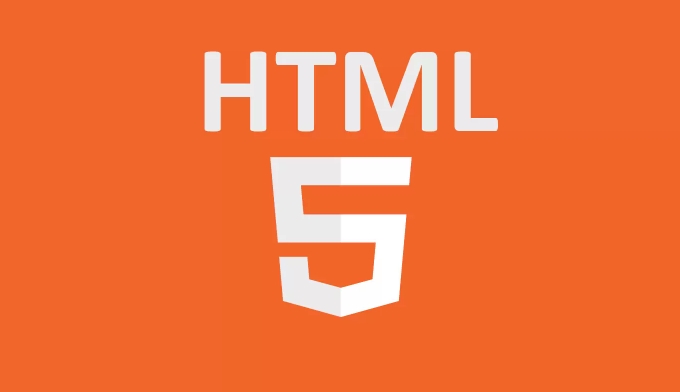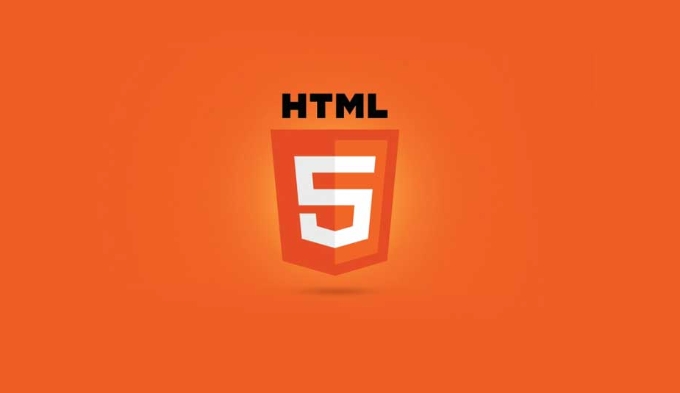Compute Shader is a general purpose computing shader that can be widely used in parallel data processing in H5 projects. It is suitable for tasks such as image processing, particle system simulation, audio analysis, AI inference preprocessing and physical simulation. The basic steps of using WebGPU Compute Shader include: initializing the WebGPU device, creating a Compute Pipeline, writing WGSL shader code, preparing buffers, setting binding groups, scheduling execution, and reading results. Although its performance advantages are obvious, it is necessary to pay attention to data transmission overhead, memory access conflicts, platform compatibility and debugging difficulties, especially on mobile terminals, which should be fully tested and adapted.

WebGPU supports parallel processing using Compute Shaders, and WebGPU is a very suitable choice for H5 projects if you want to utilize GPU acceleration. The "H5" mentioned here generally refers to HTML5 application scenarios, such as mobile web games or visualization tools. In these applications, writing Compute Shader through WebGPU can significantly improve data processing efficiency.

What is Compute Shader?
Compute Shader is a universal computing shader that is not limited to graphics rendering and can be used for any task that requires large-scale parallel computing. Compared with traditional CPU multithreading, it is more suitable for processing large amounts of independent data, such as image filtering, physical simulation, AI inference preprocessing, etc.
In WebGPU, Compute Shader is written in WGSL (WebGPU Shading Language), runs on the GPU, and organizes execution units through a "workgroup". Each workgroup can contain multiple "local invocations", which can share memory and collaborate to complete tasks.

How to use WebGPU Compute Shader in an H5 project?
To use Compute Shader on the H5 page, you must first make sure that your browser supports WebGPU and that the user device has corresponding GPU support. Currently, mainstream modern browsers such as Chrome, Edge, and Safari (partially supported) have already supported WebGPU.
Here are the basic steps:

- Initialize a WebGPU device
- Create Compute Pipeline
- WGSL shader code
- Prepare the input and output buffer (buffer)
- Setting up Bind Group
- Scheduling Compute Shader Execution
- Read the result from the output Buffer
Among them, WGSL's syntax is relatively simple, but it needs to understand its parallel execution model. For example, you can define a workgroupShared variable that is shared within the same workgroup.
Which scenarios are suitable for Compute Shader?
In H5 applications, the following types of tasks are particularly suitable for acceleration with Compute Shader:
- Image processing : Blur, edge detection, color conversion and other operations can all be parallelized.
- Particle system simulation : The state update of each particle can be calculated independently.
- Audio analysis : spectrum analysis, FFT operation, etc.
- AI pre-inference processing : Image scaling, normalization, etc. can be quickly done on the GPU.
- Fabric/Physical Simulation : Simple software simulation can also be implemented in Compute Shader.
For example, if you want to do an image grayscale function, traditional JS may have to traverse pixel points and process them one by one, while Compute Shader can process multiple pixels at once, which is much more efficient.
Issues to be aware of
Although Compute Shader is very powerful, there are still some details to pay attention to in actual use:
- Data transfer overhead: It may be more time-consuming to transfer data from the CPU to the GPU and read it back than the calculation itself, so try to multiplex the data within the GPU multiple times.
- Memory access conflict: Multiple threads write to the same piece of memory at the same time will cause problems, and access policies should be designed reasonably.
- Platform compatibility: Different platforms have restrictions on the number and size of Workgroups, and dynamic adaptation is recommended.
- Debugging difficulty: WebGPU currently lacks powerful debugging tools, so troublesome troublesome to troubleshoot when errors occur.
Especially for mobile H5 projects, the performance differences between different devices are large, and performance testing and downgrade solutions must be carried out.
Basically that's it. If you are working on an H5 graphics or data-intensive project, trying to access the WebGPU Compute Shader is a direction worth considering.
The above is the detailed content of H5 Compute Shaders with WebGPU for Parallel Processing. For more information, please follow other related articles on the PHP Chinese website!

Hot AI Tools

Undress AI Tool
Undress images for free

Undresser.AI Undress
AI-powered app for creating realistic nude photos

AI Clothes Remover
Online AI tool for removing clothes from photos.

Clothoff.io
AI clothes remover

Video Face Swap
Swap faces in any video effortlessly with our completely free AI face swap tool!

Hot Article

Hot Tools

Notepad++7.3.1
Easy-to-use and free code editor

SublimeText3 Chinese version
Chinese version, very easy to use

Zend Studio 13.0.1
Powerful PHP integrated development environment

Dreamweaver CS6
Visual web development tools

SublimeText3 Mac version
God-level code editing software (SublimeText3)
 Adding drag and drop functionality using the HTML5 Drag and Drop API.
Jul 05, 2025 am 02:43 AM
Adding drag and drop functionality using the HTML5 Drag and Drop API.
Jul 05, 2025 am 02:43 AM
The way to add drag and drop functionality to a web page is to use HTML5's DragandDrop API, which is natively supported without additional libraries. The specific steps are as follows: 1. Set the element draggable="true" to enable drag; 2. Listen to dragstart, dragover, drop and dragend events; 3. Set data in dragstart, block default behavior in dragover, and handle logic in drop. In addition, element movement can be achieved through appendChild and file upload can be achieved through e.dataTransfer.files. Note: preventDefault must be called
 Getting user location with HTML5 geolocation API
Jul 04, 2025 am 02:03 AM
Getting user location with HTML5 geolocation API
Jul 04, 2025 am 02:03 AM
To call GeolocationAPI, you need to use the navigator.geolocation.getCurrentPosition() method, and pay attention to permissions, environment and configuration. First check whether the browser supports API, and then call getCurrentPosition to obtain location information; the user needs to authorize access to the location; the deployment environment should be HTTPS; the accuracy or timeout can be improved through configuration items; the mobile behavior may be limited by device settings; the error type can be identified through error.code and given corresponding prompts in the failed callback to improve user experience and functional stability.
 Using ARIA attributes with HTML5 semantic elements for accessibility
Jul 07, 2025 am 02:54 AM
Using ARIA attributes with HTML5 semantic elements for accessibility
Jul 07, 2025 am 02:54 AM
The reason why ARIA and HTML5 semantic tags are needed is that although HTML5 semantic elements have accessibility meanings, ARIA can supplement semantics and enhance auxiliary technology recognition capabilities. For example, when legacy browsers lack support, components without native tags (such as modal boxes), and state updates need to be dynamically updated, ARIA provides finer granular control. HTML5 elements such as nav, main, aside correspond to ARIArole by default, and do not need to be added manually unless the default behavior needs to be overridden. The situations where ARIA should be added include: 1. Supplement the missing status information, such as using aria-expanded to represent the button expansion/collapse status; 2. Add semantic roles to non-semantic tags, such as using div role to implement tabs and match them
 Securing HTML5 web applications against common vulnerabilities
Jul 05, 2025 am 02:48 AM
Securing HTML5 web applications against common vulnerabilities
Jul 05, 2025 am 02:48 AM
The security risks of HTML5 applications need to be paid attention to in front-end development, mainly including XSS attacks, interface security and third-party library risks. 1. Prevent XSS: Escape user input, use textContent, CSP header, input verification, avoid eval() and direct execution of JSON; 2. Protect interface: Use CSRFToken, SameSiteCookie policies, request frequency limits, and sensitive information to encrypt transmission; 3. Secure use of third-party libraries: periodic audit dependencies, use stable versions, reduce external resources, enable SRI verification, ensure that security lines have been built from the early stage of development.
 Integrating CSS and JavaScript effectively with HTML5 structure.
Jul 12, 2025 am 03:01 AM
Integrating CSS and JavaScript effectively with HTML5 structure.
Jul 12, 2025 am 03:01 AM
HTML5, CSS and JavaScript should be efficiently combined with semantic tags, reasonable loading order and decoupling design. 1. Use HTML5 semantic tags, such as improving structural clarity and maintainability, which is conducive to SEO and barrier-free access; 2. CSS should be placed in, use external files and split by module to avoid inline styles and delayed loading problems; 3. JavaScript is recommended to be introduced in front, and use defer or async to load asynchronously to avoid blocking rendering; 4. Reduce strong dependence between the three, drive behavior through data-* attributes and class name control status, and improve collaboration efficiency through unified naming specifications. These methods can effectively optimize page performance and collaborate with teams.
 Using HTML5 Semantic Elements for Page Structure
Jul 07, 2025 am 02:53 AM
Using HTML5 Semantic Elements for Page Structure
Jul 07, 2025 am 02:53 AM
Using HTML5 semantic tags can improve web structure clarity, accessibility and SEO effects. 1. Semantic tags such as,,,, and make it easier for the machine to understand the page content; 2. Each tag has a clear purpose: used in the top area, wrap navigation links, include core content, display independent articles, group relevant content, place sidebars, and display bottom information; 3. Avoid abuse when using it, ensure that only one per page, avoid excessive nesting, reasonable use and in blocks. Mastering these key points can make the web page structure more standardized and practical.
 HTML5 video not playing in Chrome
Jul 10, 2025 am 11:20 AM
HTML5 video not playing in Chrome
Jul 10, 2025 am 11:20 AM
Common reasons why HTML5 videos don't play in Chrome include format compatibility, autoplay policy, path or MIME type errors, and browser extension interference. 1. Videos should be given priority to using MP4 (H.264) format, or provide multiple tags to adapt to different browsers; 2. Automatic playback requires adding muted attributes or triggering .play() with JavaScript after user interaction; 3. Check whether the file path is correct and ensure that the server is configured with the correct MIME type. Local testing is recommended to use a development server; 4. Ad blocking plug-in or privacy mode may prevent loading, so you can try to disable the plug-in, replace the traceless window or update the browser version to solve the problem.
 Embedding video content using the HTML5 `` tag.
Jul 07, 2025 am 02:47 AM
Embedding video content using the HTML5 `` tag.
Jul 07, 2025 am 02:47 AM
Embed web videos using HTML5 tags, supports multi-format compatibility, custom controls and responsive design. 1. Basic usage: add tags and set src and controls attributes to realize playback functions; 2. Support multi-formats: introduce different formats such as MP4, WebM, Ogg, etc. through tags to improve browser compatibility; 3. Custom appearance and behavior: hide default controls and implement style adjustment and interactive logic through CSS and JavaScript; 4. Pay attention to details: Set muted and autoplay to achieve automatic playback, use preload to control loading strategies, combine width and max-width to achieve responsive layout, and use add subtitles to enhance accessibility.






